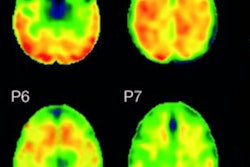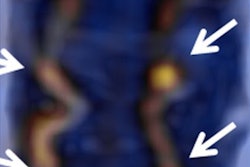Dear Molecular Imaging Insider,
Additional training in FDG-PET/CT to monitor concurrent chemotherapy for patients with stage III non-small cell lung cancer (NSCLC) can significantly extend both overall and progression-free survival. This conclusion comes from a multicenter trial that targeted seven low- and middle-income countries to assess the efficacy of FDG-PET/CT guidance during cancer treatment.
One important key to success was collaborative training to improve interobserver interpretations and consensus among radiation oncologists as well as nuclear medicine physicians who are less skilled in using the hybrid modality. The collaboration improved tumor delineation and also enhanced patient management by streamlining the patient pathway from diagnosis to treatment.
The details are available in today's news report.
Gallium-68 (Ga-68) prostate-specific membrane antigen (PSMA) continues to contribute to the detection and assessment of prostate cancer. Researchers from Zurich have found that patients can benefit from Ga-68 PSMA with PET/MRI or multiparametric MRI alone to diagnose specific features of their disease through better sensitivity, especially when determining tumor cell spread beyond the lymph node capsule or when prostate cancer extends into the seminal vesicles.
In addition, Italian researchers have created a Ga-68 PSMA PET/CT-based model to accurately predict which prostate cancer patients are likely to show recurrence. The nomogram uses a variety of clinical variables, including tumor grade, biochemical recurrence characteristics, and prostate-specific antigen levels, to achieve accuracy levels as high as 75% in anticipating positive or negative results and helping to avoid costly, unnecessary scans.
In other news, French investigators have combined contrast-enhanced anatomic assessments of MRI with the quantitative measurement of FDG uptake in PET to accurately characterize and differentiate between inflammation and fibrosis in the aortic walls and auxiliary branches of patients with large-vessel vasculitis. Information gleaned from the hybrid modality could help direct clinicians to more appropriate treatment for patients with large-vessel vasculitis and reduce the need for temporal artery biopsies.
Meanwhile, a research team from the U.K. and Sweden has used dynamic flortaucipir-PET imaging to show that a single moderate-to-severe traumatic brain injury can trigger signs of accumulation of neurodegenerative tau protein and lead to cognitive decline. The investigators found significant tau buildup in a brain region associated with object recognition, and they observed a correlation between the increased deposits that reduced cognitive abilities among patients with a more severe traumatic brain injury almost 20 years after their injury.
Be sure to stay in touch with the Molecular Imaging Community on a daily basis to be informed on the latest news and research.




















